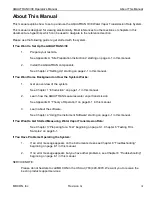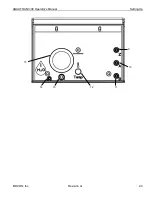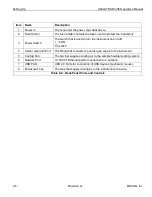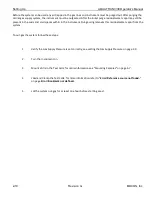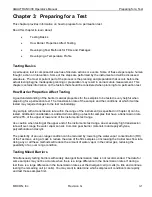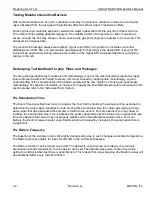
AQUATRAN 3/38 Operator’s Manual
Introduction
MOCON, Inc.
Revision G
1-3
Permeation Test Overview
A “Permeation Test” consists of up to two phases that are performed using a Test Cell. The “Cell” contains
the film sample. The Test Phase (always present) is used to measure the transmission rate of the test
sample. The Individual Zero Phase is optional and may occur at the beginning or end of a Permeation Test.
Each phase in the test consists of a series of discrete states. A Permeation Test may utilize all or only a
subset of the possible test states. During a test the steps (or states) within each phase are executed in a
fixed order. This order is called the “Test Sequence”. A brief description of the phases and states within a
permeation test are given below:
Individual Zero Phase
An Individual Zero Phase is used to determine the amount of water vapor that is present in the carrier gas
from factors other than actual transmission through the sample. This amount is subtracted from the
transmission rate obtained for each sample during testing. For more information on when and how to use an
Individual Zero Phase see “Individual Zero Processing” in Chapter 3.
Conditioning the Sample
Almost every material requires a period of time to acclimate to the environment and reach equilibrium. A
time period can be specified to allow the barrier to “Condition” to the test environment. The Conditioning
Period when used will occur at the beginning of each test phase.
ReZero State
Periodically the instrument baseline must be measured so that any changes in the baseline will not affect
the accuracy of your transmission rate data. This is done during a “ReZero State” by measuring the
apparent water vapor transmission rate of the ReZero Cell.
Cell Examination State
The Cell Examination State is used to measure the transmission rate of the barrier sample. The carrier gas
leaving the Test Cell is sent to the water vapor sensor where the amount of water vapor contained in the
gas is measured to determine a transmission rate.
Bypass State
The Bypass State is used to minimize exposure of the water vapor sensor to excessive background levels
of water vapor. The water vapor sensor is automatically placed in the Bypass State during conditioning,
when tests are completed or when an excessively high level of water vapor is detected.
Test Completion



